Early Potty Training Supplies for Young Toddlers
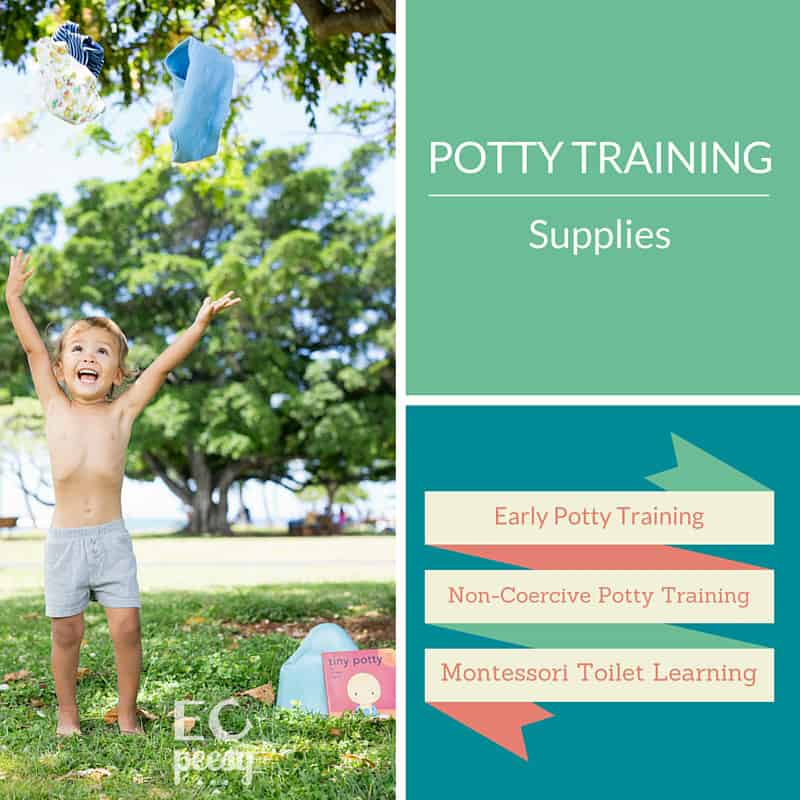
Are you preparing to potty train your young toddler, but aren't sure which supplies you will need?
This potty training supplies list covers all the gear needed for early potty training, whether you are wrapping up EC, following Montessori toilet learning, or doing non-coercive potty training.
Early Potty Training Methods
When preparing to teach your toddler the skills necessary for toilet independence, the first thing that you need is a plan! I suggest reading a book about the early potty training method of your choice. This article includes book recommendations for:
- Elimination Communication Graduation
- Montessori Toilet Learning (12-18 M)
- Non-coercive Potty Training (18 M+)
- Individually Tailored Potty Training
Disclosure: This post contains affiliate links. If you click on an affiliate link and make a purchase, I will earn a small commission, at no extra cost to you. Thanks for your support!
Elimination Communication Graduation
If you are practicing elimination communication with your baby, you may not need to do a formal potty training experience. The transition to potty independence may happen naturally over time. Once your toddler is walking, you can implement the principles of Montessori toilet learning, in order to guide your toddler towards toilet independence. If you need more input on how to complete elimination communication, you can take Andrea Olson's online class "Wrapping up EC". She presents three options: 1) pure EC; 2) hybrid plan for toddlers; and 3) potty training.
Go Diaper Free by Andrea Olson
If your baby is between 0 and 12-months-old and you are interested in starting EC, I recommend reading Go Diaper Free: A Simple Handbook for Elimination Communication by Andrea Olson. Elimination communication is a gentle method of allowing your baby to use the toilet. EC can be started as early as birth and works best when started by one-year-old. If this approach sounds intriguing, you may also want to read our list of elimination communication supplies.
Montessori Toilet Learning
Phase 1 of Montessori toilet learning incorporates using cloth diapers, and engaging your baby in the diaper changing process. You can also integrate elimination communication and offer your baby opportunities to use the potty during diaper changes or other transitions throughout the day. Phase 2 of Montessori toilet learning can start between 12 to 18-months-old, once your child is walking. The bathroom environment is prepared in a manner that allows your child to independently complete the bathroom routine. The skills needed for toilet independence are practiced over time, allowing for a gradual transition to toilet independence. During this learning process, your child can wear cloth training pants.
Toilet Awareness by Sarah Moudry
If you are looking for a gradual way to potty train your toddler, I recommend reading Toilet Awareness which is a very succinct (22 pages) explanation of Montessori toilet learning. This method of guiding your child to being able to complete the bathroom routine independently is pretty straight forward, so it doesn't require a long explanation. Simply prepare the environment in a manner that allows for independent bathroom use and make sure your child is given plenty of opportunities to practice the skills necessary for independence.
Non-Coercive Potty Training
Non-coercive potty training teaches the skills necessary for potty independence, without the use of punishments or rewards. This method starts with saying "goodbye" to diapers and doing a few intense teaching days with your toddler bare-bottomed. You can dive in and do both daytime and nighttime potty training at the same time, or start with just daytime training. Non-coercive potty training is intended for potty training toddlers at 18-months-old, 2-years-old, and up.
The Tiny Potty Training Book by Andrea Olson
The Tiny Potty Training Book presents a step-by-step plan for implementing non-coercive potty training. Andrea Olson is an expert in elimination communication and author of Go Diaper Free: A Simple Handbook for Elimination Communication. Her background makes this potty training book is a good option for families looking for a way to wrap up EC. The gentle but firm method is intended for toddlers 18-months or older. Along with the book, you will also receive entrance into a private support group. Receive 15% off with coupon ECPEESY15.
Oh Crap! Potty Training by Jamie Glowacki
Oh Crap! Potty Training presents a non-coercive potty training plan in a humorous manner. It is intended for doing early potty training with toddlers 20-months-old through 30-months-old.
Individually Tailored Potty Training Plan
Each family and child is unique. Some families are okay starting the potty training experience with bare-bottomed teaching days. Other families prefer to use training pants or complete outfits. Some families lean towards reusable eco-friendly gear, while others prioritize convenience. Some parents focus on their child's intrinsic motivation, while others are okay with providing extrinsic motivation. You can take your family's values and your child's developmental stage into consideration when crafting a potty training plan that is the best fit for your family.
The Complete Guide to Potty Training by Michelle D. Swaney
Michelle D. Swaney of The Potty School recently released The Complete Guide to Potty Training. If you are looking for a choose-your-own-adventure potty training book, this is the one for you! This guide will help you adapt potty training to your own unique family.
Board Books for Your Potty-Learning Child
During the potty-learning process it's nice to have some children's books on hand that teach the steps of the bathroom routine.
Tiny Potty by Andrea Olson
The Tiny Potty board book was specifically written for babies practicing EC or toddlers doing early potty training. There is no mention of diapers. The main character is gender neutral and age neutral. This cute book teaches the basic steps of using the potty. Receive 15% off with coupon ECPEESY15.
Night Potty by Andrea Olson
The Night Potty board book is a bedtime sequel to the Tiny Potty board book. It reminds your child to "wake to pee!". This board book is meant for ages 6-months to five-years-old. Receive 15% off with coupon code ECPEESY15.
Potty by Leslie Patricelli
This cute book explains that while some babies use their diaper, the potty is also an option. The young gender neutral character decides to take off the diaper and use the potty.
Preparing the Bathroom Environment for Potty Learning
One extremely helpful Montessori concept is the importance of the prepared environment. You can help facilitate independence by preparing the bathroom in a manner that allows your child to complete the entire bathroom routine independently. If you notice any stumbling blocks, modify the bathroom in a way that makes the process easier for your toddler.
Potty Training Supplies for Use at Home
Small Potty
A small floor potty encourages independence, since your toddler can sit down and use the potty on his own. Potties that are a nice small size for young toddlers include the BabyBjorn Smart Potty and the Ikea Lilla Potty.
Built-in Adult/Child Toilet Seat
A built-in child toilet seat is securely attached to the adult toilet seat, so you don't have to worry about it slipping off the toilet. Once your child is nearing potty independence, this setup can be a better option than a toilet seat reducer that simply sits on top of the regular toilet seat.
Step Stool to Reach the Toilet
Pair the child toilet seat with a step stool that allows your toddler to confidently climb onto the toilet. Make sure the arrangement allows your child to safely climb onto and off of the toilet independently.
Tall Step Stool to Reach the Sink
Another important item is a tall step stool that allows your child to reach the sink to wash his hands. As soon as we got our son the Ikea Bekvam Step Stool, he was excited to climb up and wash his hands, brush his teeth, and brush his hair, repeatedly throughout the day.
Bathroom Mats
If you have a slippery bathroom floor, a bathroom mat can help hold a step stool in place, so it doesn't slide around during use.
Faucet Extender
If a tall step stool isn't enough to allow your child to reach the water in your bathroom sink, you can also add a faucet extender.
Light Switch Extender
A light switch extender is another great tool to help your child do the entire bathroom routine, "all by myself!". Our bathroom doesn't get much sunlight during the day, so we need to turn on the light whenever we enter. Our son couldn't quite reach the light switch on his own, but with this extender, he can run to the bathroom, turn on the light, and use the potty.
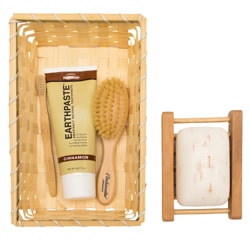
Personal Care Tray and Hand Soap
You can create a personal care tray by filling a wooden tray or basket with all of your toddler's personal care items. This allows your toddler to wash their hands, brush their teeth, and brush their hair on their own. There is more to independence in the bathroom than just using the toilet!
Hand Towel
It also helps to hang a hand towel within your child's reach, for drying hands.
Bathroom Basket
A small bathroom basket can be kept near the potty or toilet and filled with extra underwear or training pants, wipes, and toilet paper. This allows the child to have everything they need conveniently within reach. In case of an accident, the child can remove their wet underwear, get cleaned up, and put on a clean dry pair of underwear.
Wipes and Toilet Paper
I like to keep a few cloth wipes in the bathroom basket for patting dry. Disposable wipes are another option if you are not already using cloth baby wipes. We usually keep a small roll of toilet paper in my son's bathroom basket, as well. You can teach wiping by doing a first round yourself and then letting your toddler wipe with another clean wipe.
Small Laundry Hamper
A small laundry hamper can be kept near the potty for any wet underwear or clothes.
Small Chair for Dressing
Montessori bathrooms include a small chair for the child to sit on while undressing and dressing.
Full Length Mirror for Dressing
A full length mirror can help your toddler see what they are doing while pulling on underwear and pants.
Potty Training Supplies for Out and About
Leaving the house can be a bit nerve wracking when you first ditch the diapers and start potty training, but being prepared can help you feel more at ease. I like to bring along a travel potty, wet bag, prefold diaper or towel for cleaning up any messes, and a couple changes of clothes for my son. In the early days I brought along two extra shorts, two extra shirts, and three extra undies, for my son, and an extra shirt for myself. Now we pack one extra outfit for my toddler, just in case.
Kalencom 2-in-1 Potette Plus
The Potette Plus is a popular travel potty. It can be used both on top of a toilet seat as a toilet seat reducer, and standing alone as a potty. In the potty configuration it can be lined with disposable liners or a reusable collapsible liner. Disposable bags can be convenient while on the go, since you don't need to wash the potty. We often use the Potette Plus on long car trips. We can pull into a parking lot, let our son use the potty under a shade tree, throw away the bag, and be back on our way. It sure beats trying to run to the nearest bathroom in an unfamiliar town!
There is a new version called the Potette Plus Premium that has a pee guard and handles!
OXO Tot 2-in-1 Go Potty for Travel
The OXO Tot travel potty is a great option for using as a toilet seat reducer on public toilets or using as a small potty with disposable liners. It has a comfortable wide rim and a small opening in the middle, which is good for small toddlers.
Planet Wise Wet/Dry Bag
A Planet Wise Wet/Dry Bag is the perfect companion to the Potette Plus or OXO Tot travel potties. I like to fold up the travel potty and pack it in the waterproof pocket. In the non-waterproof pocket I put wipes, extra clothes, a cloth prefold or small towel for cleaning up any puddles, and a small wet bag for wet items.
Protecting the Bed for Nap and Nighttime Potty Training
Once you are ready to dive into nap and nighttime potty training, it is important to protect the bed, in case of accidents.
Wool Mattress Protector
A wool mattress protector or wool puddle pad underneath the fitted sheet can provide a water resistant, yet breathable barrier under your toddler. You may want to double make the bed at first, with mattress protector and fitted sheet, topped with another mattress protector and fitted sheet. This set up will allow you to quickly remove the top layer of bedding, if there is an accident. You can start by letting your toddler go commando at night, so he feels that there is no longer a diaper to rely upon.
Dressing for Potty Training Success
With Montessori toilet learning, your toddler can start wearing cloth training pants at around 12 to 18-months-old, while he gradually practices the skills necessary for potty independence. Be sure to see our complete list of Montessori training pants.
With non-coercive potty training, you will start out with a few intense teaching days. For at least the first day, your toddler will be bare-bottomed, so you can observe and learn their signals and natural timing. Then your toddler can transition to commando for a couple weeks, wearing pants or dresses, with nothing under. After this transition period, it's time for underwear! You may be temped to go straight from diapers to underwear, but snug underwear may feel too much like a diaper to your toddler.
Training Pants
Cloth training pants are a key component of Montessori toilet learning. With other methods of early potty training, you may want your toddler to wear cloth training pants for naps, nights, outings, or as a guest at someone's house. Receive $5 off your order of Tiny Trainers with coupon code ECPEESYTINY. These trainers run small, so be sure to check the size chart and consider sizing up.
City Threads Underwear
City Threads Underwear are made in the USA and come in either 100% cotton or organic cotton. They start from size 18-24M and run small. The fabric is thick and soft. City Threads offers briefs and boxer briefs for boys and various styles for girls.
Tiny Undies
Tiny Undies are one of the smallest brands of underwear, starting from size 6M. They are designed by Andrea Olson, author of Go Diaper Free and The Tiny Potty Training Book. Tiny Undies are available in gender-neutral solids and prints. They also run small. Receive $5 off your order of Tiny Undies with coupon code ECPEESYTINY.
Tee Shirts
Tee shirts make it easier for toddlers to dress themselves and stay out of the way while using the toilet.
Loose Pants with Elastic Waistband
Loose pants or shorts with an elastic waistband are easiest for your toddler to learn to push down and pull up. They are also great while going commando. I taught my son to push down his shorts by putting his thumbs in the waistband and pushing down. It took him a while to master, but he finally got it. This is one of the skills that seems to be more difficult the earlier you start potty training, but you can continue to work on this skill with your child, even after the initial potty training experience.
Long Socks
Long socks can keep your child warm during bare-bottomed teaching days or while going commando.
Protecting & Cleaning Carpets and Couches While Potty Training
With non-coercive potty training, during the initial teaching days your child will be running around the house bare-bottomed. The aim is to watch closely and notice when he starts to pee, and quickly whisk him to the potty. This means there will be puddles on the floor. If you have a room with wood or tile floor, you can stay confined within that area for the first day.
Water Repellent Blankets or Mats
If your house is carpeted, you can cover the carpet with wool or polar fleece blankets, waterproof picnic blankets, or yoga mats. Even though I tried covering my living room with blankets, my son usually peed on the one patch of carpet that was uncovered, so beware!
Cloth Prefold Diapers or Towels
It helps to keep a stack of cloth prefold diapers or old towels nearby to immediately soak up any puddles.
Nature's Miracle Stain & Odor Remover
A carpet stain and odor remover is also another essential in your potty training tool kit.
Potty Training Supplies You Can Skip
That wraps up our list of early potty training supplies for non-coercive potty training or Montessori toilet learning.
You may have noticed that there was no mention of sticker charts, rewards, or prizes. That is because those types of extrinsic rewards are not necessary. Rather than bribing a toddler to use the potty, we rely upon the intrinsic pride of self accomplishment a toddler feels when mastering new skills.
There is also no need for a timer, since opportunities to use the potty are based upon signals, natural timing, transitions, and intuition, not just a set time interval.
You may also want to read our tips for Packing a Potty Training Bag or our list of Organic Cotton Training Pants.
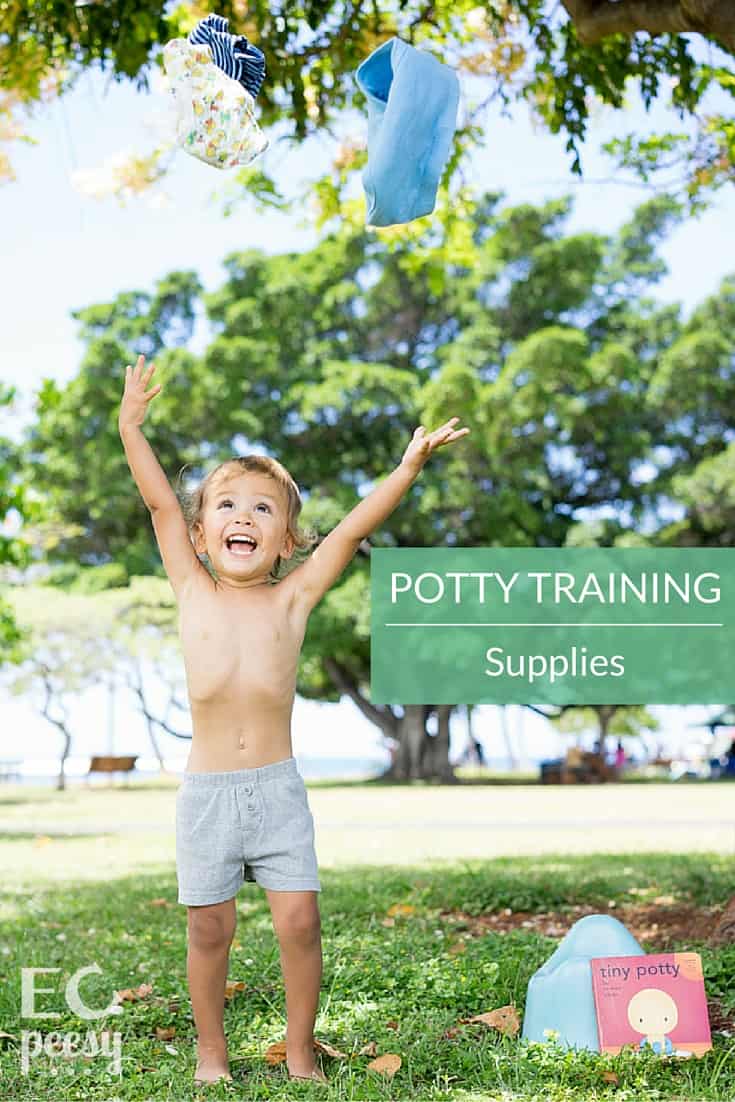

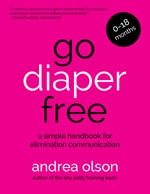

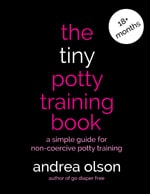


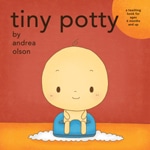
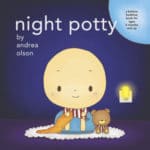













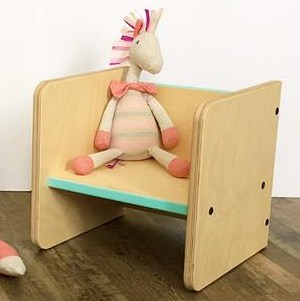




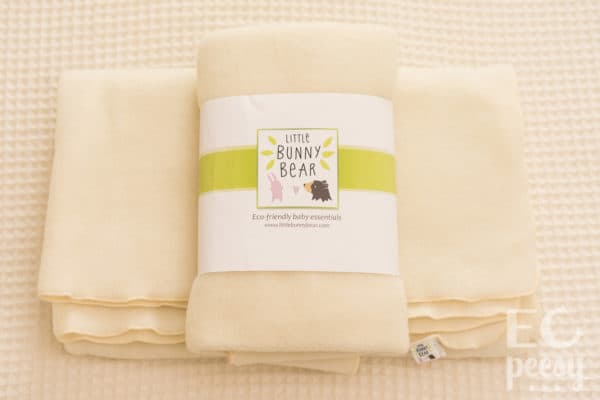

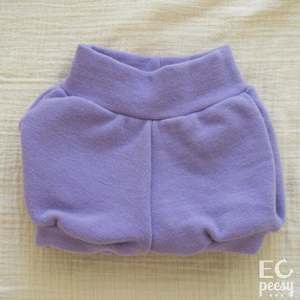

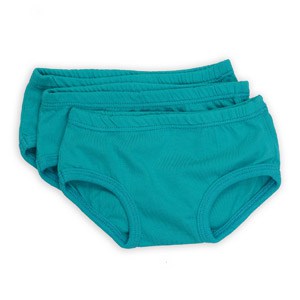
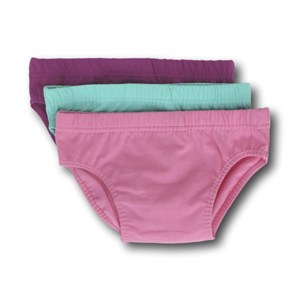
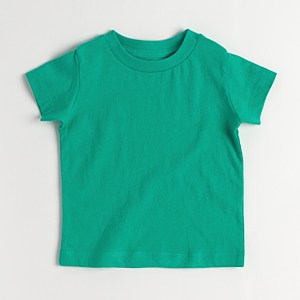
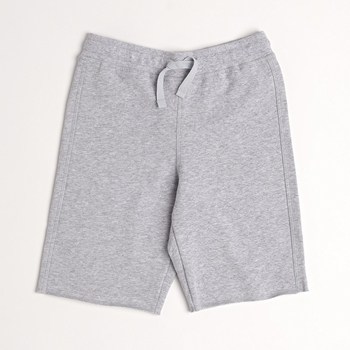




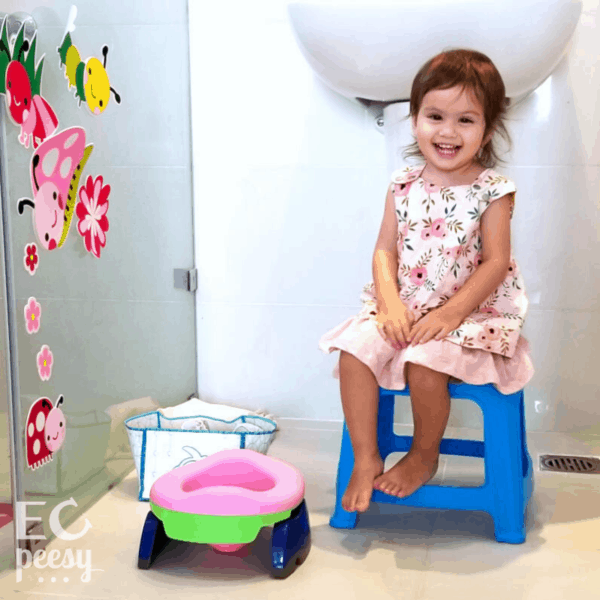
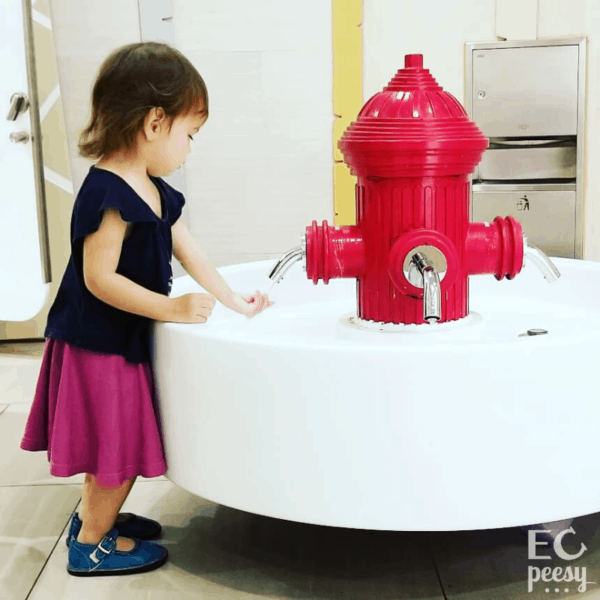
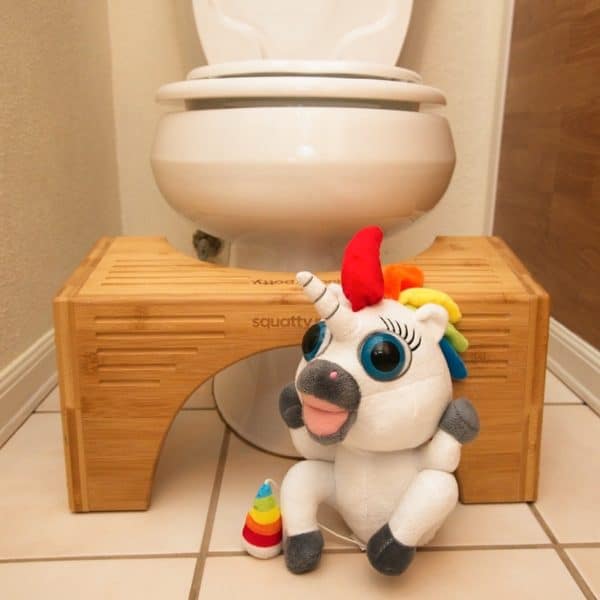
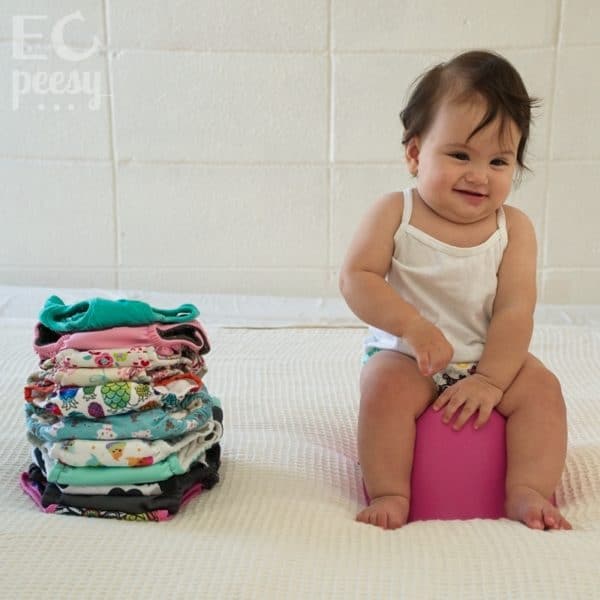
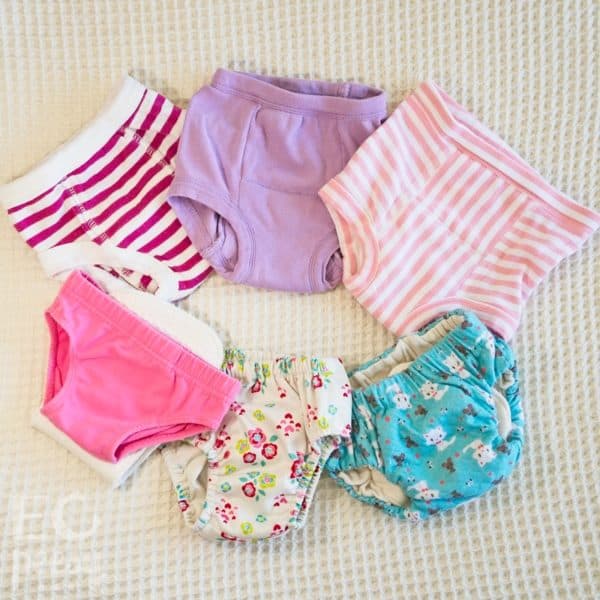
Hi Heidi,
I have a 13 month old and am preparing to begin Montessori Toilet Training. As I gather supplies, could you suggest how many trainers I should purchase? I want to have enough that I am not constantly doing laundry, but not too many that I am wasteful of my resources.
Thanks!
Angela
Hi Angela,
Sorry that I just now saw your comment. I like to have at least 9-12 pairs of training pants. I prefer to have more than enough, so I don’t have to worry about changing frequently. I guess it really depends upon how often your child has misses and whether you are only using trainers or also using diapers for nights/outings.